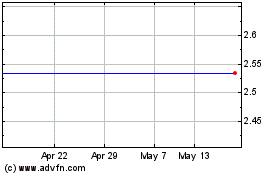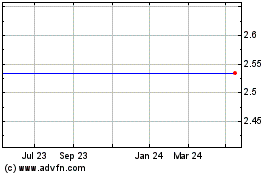Aer Lingus Limited has also been involved in a separate set of
discussions concerning the Pilots Scheme which is a single employer
scheme for Aer Lingus pilots. As part of the Greenfield agreements
negotiated in late 2009 under the auspices of the LRC, Aer Lingus
Limited and the Irish Airlines Pilots Association agreed certain
changes to the Pilots Scheme with the aim of addressing the deficit
in the Pilots Scheme over time. The changes included an increase in
retirement age from 55 to 60, a reduction in accrual rate for
future service from 45ths to 60ths and an increase in member
contributions from 7% to 11% of salary. There was no change in
employer contributions which remain at 21% of salary. The changes
were approved by the Pilots Scheme trustees and became effective as
from 1 January 2011.
As at 31 December 2014 (the most recent date in respect of which
estimated MFS data has been provided by advisors to the Pilots
Scheme), the Pilots Scheme was estimated to have an actuarial
deficit of approximately EUR212 million on the statutory MFS
basis.
Aer Lingus' consistent position is that its liability to
contribute to the Pilots Scheme is fixed at its current
contribution rate and, accordingly that it has neither a
constructive nor a legal obligation to increase its rate of
contribution to the Pilots Scheme, even if the scheme is found to
have insufficient funds to pay all employees expected benefits
relating to their current and past employment service. In the
absence of additional funding commitments from Aer Lingus, the
trustee of the Pilots Scheme was required to address that scheme's
financial position.
Aer Lingus engaged in discussions regarding the Pilots Scheme
with the trustee of the Pilots Scheme and IALPA. The parties have
agreed a form of funding proposal that has been submitted to the
Pensions Authority and this funding proposal does not involve any
capital contribution by Aer Lingus Limited either within the Pilots
Scheme or outside of the Pilots Scheme. The Pensions Authority
approved the funding proposal on 3 December 2014.
20 Provisions for other liabilities and charges
Business repositioning
Business repositioning costs include provisions for
restructuring costs recognised in accordance with IAS 37 when a
constructive obligation exists and a provision for termination
benefits that are not part of a restructuring plan, and are
therefore recognised in accordance with IAS 19R when the entity can
no longer withdraw the offer of benefits.
The amount of the restructuring provision is based on the terms
of the restructuring measures, including employee severance, which
have been communicated to employees. It represents the Directors'
best estimate of the cost of these measures.
The provision relating to the voluntary severance programme has
been recorded in respect of individuals who at the reporting date
had accepted the offer of voluntary severance but had not yet
received payment (as discussed in Note 9).
At 30 June 2015, the majority of the business repositioning
provision relates to the closure of the Shannon hangar maintenance
operation and an associated onerous lease contract as well as
termination costs in respect of the voluntary severance programme.
Measurement uncertainty associated with restructuring provisions
arises from the achievement of certain operating and financial
targets and changes in human resources requirements. Uncertainty
associated with the provision in respect of the voluntary severance
programme relates to the timing of employee exit dates.
The carrying value of business repositioning provisions at 30
June 2015 was EUR15.9 million (31 December 2014: EUR12.5
million).
Aircraft maintenance
A provision is made on a monthly basis for maintenance of
aircraft held under operating leases. The provision will be
utilised as the major airframe and engine overhauls take place and
to meet the contractual return conditions as the operating leases
expire. Measurement uncertainty associated with aircraft
maintenance provisions arises from the timing and nature of
overhaul activity required, lease return dates and conditions, and
likely utilisation of the aircraft. As a result of this and the
level of uncertainty attaching to the final outcomes, the actual
results may differ significantly from those estimated.
The carrying value of maintenance provisions at 30 June 2015 was
EUR74.7 million (31 December 2014: EUR63.3 million).
Other
Other provisions relate mainly to the frequent flyer programme
and free flight entitlements in respect of former employees. The
frequent flyer provision is utilised when points are used or when
they become non-redeemable. Points are redeemable for a maximum of
three years. Measurement uncertainty associated with the frequent
flyer and free flight programmes typically arise from variances in
estimates of flight utilisation and length of sectors flown by
programme members. The Group has also recognised a provision in
respect of a probable outflow of benefits arising from a dispute
with a supplier.
The carrying value of other provisions at 30 June 2015 was
EUR18.6 million (31 December 2014: EUR18.6 million).
21 Provision for IASS solution - once-off pension contribution
In December 2014, Aer Lingus Group plc shareholders voted in
favour of the IASS solution which seeks to address issues arising
from the funding deficit in the IASS (see Note 19). The approval of
the IASS solution involved a once-off exceptional charge of
EUR190.7 million in Aer Lingus' consolidated income statement for
the financial year ended 31 December 2014 and the recognition of a
provision, also with a value of EUR190.7 million, in the Group's
consolidated statement of financial position as at 31 December
2014.
The once-off contribution of EUR190.7 million was placed in an
escrow structure and was disclosed as a restricted deposit balance
in Aer Lingus' consolidated statement of financial position (see
Note 15).
This liability reduces further and potentially to nil as the
correctly executed waivers referred to in Note 19 are received. As
at 30 June 2015 63.4% of waivers (78.9% for active members and
50.8% for deferred members) had been received. Therefore the
provision reduced by EUR135.1 million from EUR190.7 million at 31
December 2014 to EUR55.6 million.
See Note 27 'Events after the reporting period' and Note 19
'Defined contribution pension schemes' for more detail in relation
to this provision and a further update on the percentage of waivers
signed.
22 Contingent liabilities and assets
Arrangement relating to Stobart Air
Aer Lingus Regional flights are operated by Stobart Air
(previously known as Aer Arann). However passengers book their
flights using the Aer Lingus website and booking channels. Should
Stobart Air fail to meet its obligations to passengers and if such
passengers were to then seek refunds from their credit card
providers, Aer Lingus may have an obligation to reimburse those
credit card companies for losses incurred. In such circumstances,
Aer Lingus would have a corresponding claim against Stobart
Air.
No amounts have been provided in respect of this matter.
Air travel tax
On 25 July 2012, the European Commission ("EC") issued a
decision with regard to the Irish air travel tax. With effect from
31 March 2009, Ireland introduced an air travel tax for flights
departing from Irish airports. The tax was set at EUR2 for
destinations within 300km of Dublin airport and at EUR10 for those
exceeding 300km. The EC found that the lower rate constituted
unlawful state aid and ordered Ireland to recover EUR8 per
passenger (being the difference between the lower and the higher
rate) for each passenger subject to the lower rate from a number of
airlines, including Aer Lingus.
In April 2013, the Irish Government commenced High Court
proceedings against Aer Lingus pursuant to the EC's decision of 25
July 2012 seeking recovery of approximately EUR4 million plus
interest. Aer Lingus is contesting these proceedings and is
assessing the implications for these proceedings of the recent
judgement of the General Court (see below). Aer Lingus has also
issued separate proceedings against the Irish Government on the
basis that the air travel tax infringed EU rules on free movement
of services. These proceedings seek repayment of EUR8 per passenger
for each passenger subject to the higher rate and/or damages.
On 5 February 2015, the European General Court annulled the EC's
decision in so far as it ordered the recovery of the aid from the
beneficiaries for an amount set at EUR8 per passenger. While the
General Court found that the EC had not erred in concluding that
the application of the different rates of air travel tax
constituted State aid in favour of airlines whose flights were
subject to the lower rate of EUR2, it found that the EC had erred
in quantifying the amount of aid to be recovered at EUR8 per
passenger. The General Court noted that the EC had not established
that the recovery of EUR8 per passenger was necessary in order to
ensure the restoration of the situation which would have prevailed
if the flights subject to the rate of EUR2 per passenger had been
subject to the rate of EUR10 per passenger. It also considered that
it was not possible for the airlines to recover retroactively from
their customers the EUR8 per passenger which should have been
collected and that the recovery of such an amount would be liable
to create additional distortions of competition since it could lead
to the recovery of more from the airlines than the advantage they
actually enjoyed.
The EC has appealed the decision of the European General Court
to the European Court of Justice. Aer Lingus has also filed a
cross-appeal. The Irish Government's recovery proceedings have been
stayed pending resolution of these appeals.
No amounts have been provided in respect of this matter.
European Union Regulation (EC) 261/2004
Aer Lingus (LSE:AERL)
Historical Stock Chart
From May 2024 to Jun 2024

Aer Lingus (LSE:AERL)
Historical Stock Chart
From Jun 2023 to Jun 2024
